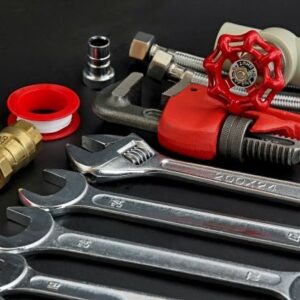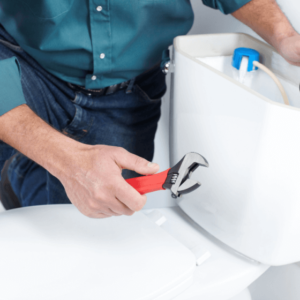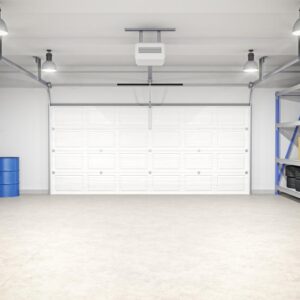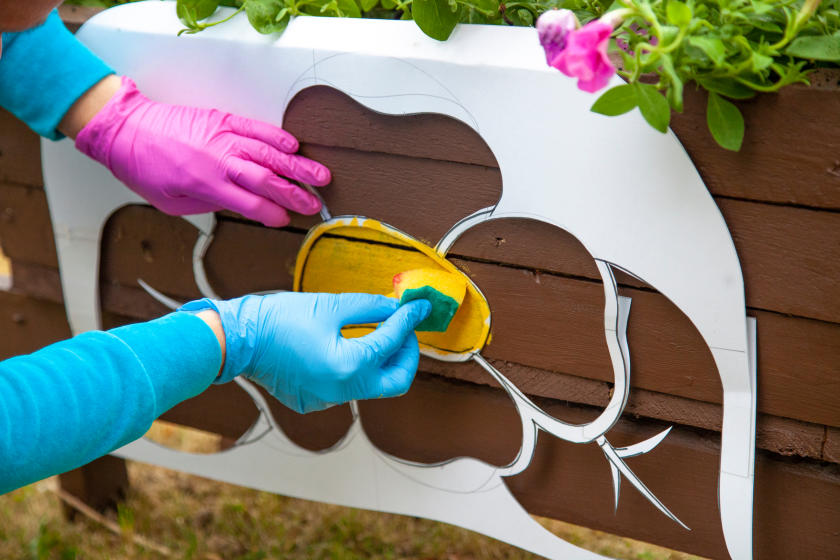Planters and trellises are great additions to your patio, deck or garden. They accent your landscaping and complement existing lawn and garden features to help you create an attractive outdoor environment. You can customize even more by painting or decorating planters and trellises. It’s an easy and inexpensive way to make your outdoor space even more appealing.
How to Paint an Outdoor Planter
Step 1: Plan Your Design
If you have an existing planter, put some thought into where it’s placed and how it works with your existing patio or deck design. Do the plants work with your current planter and will they work with your new arrangement? Is the existing planter in good condition? Do you have wood, metal or stone planters? How will they affect your new design? After taking these questions into consideration, begin plotting your design ideas specifically for the new planter.
If you’re just going to paint the planter, think outside the box. If your planters are plastic or PVC, or even metal, consider colors that add texture with unique finishes like rust, antiqued metal, gold or copper. These finishes are available in spray paint kits. Many people opt for gluing on stones, mosaic tiles or customized ornaments, such as wood, stone carvings or metal pieces. Another option is a technique called decoupage.
Step 2: Prepare Your Planter for Painting
For painting, choose an area outdoors or a space with adequate ventilation, such as a garage. Protect the floor or ground with a drop cloth or tarp. Because you still need to prepare the surface of your planter for the proper adhesion of decorations, you may still have to paint it if your design doesn’t call for total coverage of the planter’s surface.
Remove all flowers, plants and soil from the planter and clean it thoroughly with a hose. Use a rag or old towel to remove any stubborn dirt. Make sure the inside is free of any dirt and debris. Let it dry completely before painting. Make any necessary repairs.
If your planter is wood, prepare the outside surface by first removing the old finish. If you bought a new planter to paint or built one that is still unfinished, you can proceed to the next step. Start sanding with medium-low grit sandpaper to clean off the old finish and smooth out any imperfections in the wood. Then smooth the whole piece down with fine-grit sandpaper. Be sure to sand along the grain of the wood. Remove sawdust from the surface with a hand vacuum, brush or soft cloth. Be sure there is no residue from sanding left on the surface before you proceed.
Safety Alerts!
Always wear protective gloves, safety goggles and a dust mask when sanding.
Be sure your work area is well-ventilated.
If the planter you’re working on is concrete, clean the interior and exterior surfaces with a chemical concrete cleaner and a scrub brush and then let it dry thoroughly.
Safety Alerts!
Follow the manufacturer’s directions carefully when using the concrete cleaner.
Wear old clothes, safety goggles and protective gloves when using chemical concrete cleaner.
Step 3: Prime the Planter
Priming your planter will ensure that whether you are working on wood, concrete, metal, etc., your paint job will last for a considerable amount of time. If you have a wood planter, use a paintbrush to apply a coat of water-based primer, such as True Value EasyCare Ultra Premium Exterior Primer/Sealer. Allow the primer to dry thoroughly, approximately four hours or so. Feel the planter’s surface for any rough spots and sand lightly if necessary with fine-grit sandpaper. Apply a second coat. Let this coat of primer dry for approximately 12 to 24 hours before proceeding.
Concrete planters should be primed with a latex primer specially formulated for masonry or exterior surfaces. Apply the primer using a paintbrush. Apply two coats. Let the final coat of primer dry for 12 to 24 hours before moving on.
Step 4: Paint the Planter
If your planter is wood, apply True Value EasyCare Ultra Premium Exterior Paint, with a medium-sized paintbrush. Brush it on with even strokes in the direction of the wood grain. If you use True Value EasyCare Premium Décor Spray Enamel, go slowly, holding the can about 12″ from the surface. When using spray paint, you should apply the second coat within 1 hour or after 24 hours. With wood or concrete, apply two coats and let the second coat dry for 12 to 24 hours.
Helpful Tips
Plastic planters are best painted with a spray paint that is formulated for plastic or PVC surfaces.
Metal planters should be covered with a spray paint formulated for metal surfaces.
Concrete planters can be painted with True Value EasyCare Ultra Premium Exterior Masonry/Stucco Paint. It’s best to use a satin or semi-gloss finish for a long lasting effect. Paint them as you would a wood painter, using an appropriate-sized paintbrush. Let the paint dry completely. Lastly, seal the planter before refilling with soil and plants or before decorating (See Step 5). Apply at least two coats of quality concrete sealant to the inside and outside of the planter to ensure your paint job lasts. The double coats will also help prevent paint from seeping into the soil inside the planter, which would be unhealthy for your plants.
Helpful Tips
Put a few inches of gravel in the bottom of the concrete planter for drainage before refilling with soil.
You can decorate your concrete planter by painting it with a of couple complementary colors or with stripes or other patterns. Use your creativity and imagination!
Step 5: Complete the Planter with Decorative Accents
Once the paint and/or sealant has completely dried and before you refill the planter, you’re free to begin your decoration of the planter. Whatever touches you add, you’re only as limited as your imagination and creativity. Don’t be afraid to try something new. Sketch your ideas out on a piece of cardboard or paper to make sure your design ideas will work. You don’t want to have to start the whole project from scratch because of improper planning or because some important details were not taken into account.
Decorative accents of metal, wood, clay, stone, etc. add character and your customized touch. Try to match their colors with the colors of your planter. Choose complementary shades or tones that add contrast but work with the overall design of your deck or patio.
If you’re attaching stones, shells, tiles or ornaments, use a high-quality wood glue for wood planters. For any planter surface, choose a waterproof glue or adhesive that is meant for outdoor use.
You can also use stencils to personalize your planter. Use words or images to create a pattern or a simple motif. Simply attach the stencil in the desired location on the planter with masking tape and then use a small paintbrush and paint to color in the letters or images. Then carefully remove the stencil and repeat again in a different location.
Decoupage is an artistic method of pasting images you’ve cut out or collected onto a surface, not unlike a collage. You can find images you like in books, magazines, postcards, or gather images from the Internet. Cut out and trim images to fit and either attach them in patterns, as a single image or cover the entire surface of the planter with your ideas. Attach the pictures with craft glue, decoupage sealer, or a similar adhesive. Once the glue has dried, seal the surface with a waterproof sealant such as polyurethane or another type of varnish to protect your work from the elements.
How to Paint an Outdoor Trellis
Because a trellis allows for the vertical growth of climbing plants, they often have their own built-in decorative dynamic. You can use this to help decorate your trellis. It doesn’t hurt to paint and add other decorative touches to complete your patio or garden’s look. See below for a few tips on how to make a wood trellis elevate your outdoors.
Step 1: Prepare Your Trellis for Painting or Staining
Prepare the trellis, whether it is new or old, by sanding the surface with fine-grit sandpaper. This smoothes any rough edges, cleans away dirt and debris, and abrades the surface for optimal paint or stain adhesion. After sanding, wipe down the entire trellis with a slightly damp rag to remove dust and particles.
If you’re refinishing a trellis, remove the old finish with medium-low grit sandpaper or use a chemical stripper. Using a chemical stripper can make removing the old finish easier because it can be brushed into hard-to-reach spaces. Note that most chemical strippers need to be mixed with water so check the manufacturer’s directions before applying. Using a medium-sized paintbrush, apply the solution evenly over the surface. Let it soak 20 to 30 minutes then remove the old finish using a plastic scraper, a smooth, round-edged putty knife or an old rag. The surface may be soft, so be careful not to damage it with a scraper. Allow the trellis to dry completely.
Safety Alerts!
Always follow manufacturer’s instructions and wear rubber gloves and protective goggles when using strong chemicals.
Never strip anything near an open flame because stripping chemicals can ignite.
After removing the old finish, lightly sand with fine-grit sandpaper and wipe down with a damp cloth. Cover the floor or ground of your workspace with drop cloths or tarps.
If you plan on painting the trellis, first apply a couple coats of True Value EasyCare Ultra Premium Exterior Primer/Sealer to the entire trellis surface using a small or medium-sized paintbrush or sponge brush. After the second coat has dried completely, you’re ready to apply paint.
Step 2: Paint or Stain the Trellis
If painting, apply True Value EasyCare Ultra Premium Exterior Paint to the trellis’ entire surface using a small or medium-sized paintbrush. You can also use spray paint to quickly and evenly cover the surface. Spray slowly, holding the can about 12″ from the surface. Apply a second coat within an hour or after 24 hours and let it dry for 12 to 24 hours.
If staining, use a high-quality finish with UV inhibitors, such as True Value Woodsman stain. Use a small to medium-sized paintbrush, sponge brush or paint sprayer to completely cover the wood’s surface. You can also use a rag to wipe on the stain. If you choose a sprayer, use an airless model or rent a high-volume/low-pressure (HVLP) sprayer. This will give you greater control with less overspray. Whatever applicator you choose, you’ll still need a paintbrush to catch any drips and work paint into hard-to-reach areas. After the first coat has dried, apply a second coat. For long-lasting protection, seal the wood with a waterproof clear polyurethane sealant or varnish.
Step 3: Complete the Trellis with Plants and Decor
The main point of interest should be the greenery that will grow on the trellis. Try growing ivy, climbing hydrangea, morning glories, climbing roses, honeysuckle, wisteria, jasmine, clematis or climbing-vine plants like black-eyed susans and bougainvillea vines. Plants are planted at the base of the trellis and then are trained to grow up through the trellis rungs.
Trellises can be decorative and practical in the garden. Vegetables such as vine beans, squash and tomatoes grow well on a trellis. Just be sure that your trellis is well-anchored and/or sturdy enough to support the fruit and vegetables that will eventually be produced.
Hang ornaments, pictures and other items of your choice on the trellis with S-hooks or similar hangers. Make sure that whatever you adorn the trellis with is waterproof or otherwise resistant to the outside elements.
Mini-lights and rope lights can have a dazzling effect at night, for the holidays or year-round. Just intertwine them through the trellis rungs and plug them into a GFCI electrical outlet, as you would holiday lights.
That’s it! Enjoy your refreshed planter and trellis.
Project Shopping List
Here’s what you’ll need to complete this project successfully.
- Drop cloths
- Tarps
- Hose
- Rag or old towel
- Medium-low grit sandpaper
- Fine-grit sandpaper
- Hand vacuum
- Brush
- Soft cloth
- Protective gloves
- Safety goggles
- Dust mask
- Chemical concrete cleaner
- Scrub brush
- Small paintbrush
- Medium-sized paintbrushes
- EasyCare Ultra Premium Exterior Primer/Sealer
- EasyCare Ultra Premium Exterior Paint
- Spray paint for plastic or PVC surfaces (for plastic planter)
- Spray paint for metal surfaces (for metal planter)
- EasyCare Ultra Premium Exterior Masonry/Stucco Paint (for concrete planter)
- Concrete sealant (for concrete planter)
- Woodsman stain (optional)
- EasyCare Premium Décor Spray Enamel (optional)
- Gravel
- Cardboard
- Decorative material (optional)
- High-quality wood glue
- Waterproof glue
- Adhesive for outdoor use
- Stencils
- Masking tape
- Paint
- Craft glue or decoupage sealer
- Waterproof clear polyurethane sealant
- Waterproof clear polyurethane varnish
- Chemical paint stripper
- Plastic paint scraper
- Putty knife
- Rubber gloves
- Sponge brush
- Paint sprayer
- S-hooks
- Mini-lights and rope lights












